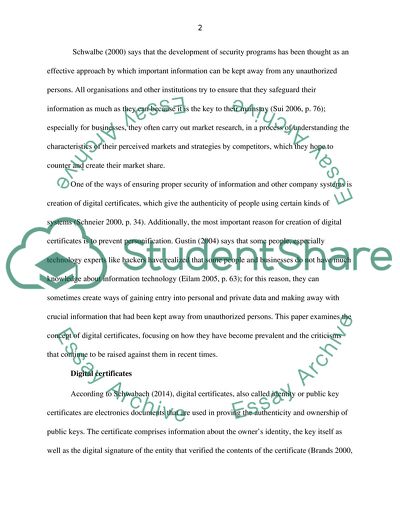Cite this document
(Digital Certificate Technology and Its Criticisms in the Recent Times Coursework Example | Topics and Well Written Essays - 2500 words, n.d.)
Digital Certificate Technology and Its Criticisms in the Recent Times Coursework Example | Topics and Well Written Essays - 2500 words. https://studentshare.org/information-technology/1873221-digital-certificate-technology-has-been-fundamentally-and-increasingly-compromised-in-recent-times
Digital Certificate Technology and Its Criticisms in the Recent Times Coursework Example | Topics and Well Written Essays - 2500 words. https://studentshare.org/information-technology/1873221-digital-certificate-technology-has-been-fundamentally-and-increasingly-compromised-in-recent-times
(Digital Certificate Technology and Its Criticisms in the Recent Times Coursework Example | Topics and Well Written Essays - 2500 Words)
Digital Certificate Technology and Its Criticisms in the Recent Times Coursework Example | Topics and Well Written Essays - 2500 Words. https://studentshare.org/information-technology/1873221-digital-certificate-technology-has-been-fundamentally-and-increasingly-compromised-in-recent-times.
Digital Certificate Technology and Its Criticisms in the Recent Times Coursework Example | Topics and Well Written Essays - 2500 Words. https://studentshare.org/information-technology/1873221-digital-certificate-technology-has-been-fundamentally-and-increasingly-compromised-in-recent-times.
“Digital Certificate Technology and Its Criticisms in the Recent Times Coursework Example | Topics and Well Written Essays - 2500 Words”. https://studentshare.org/information-technology/1873221-digital-certificate-technology-has-been-fundamentally-and-increasingly-compromised-in-recent-times.


